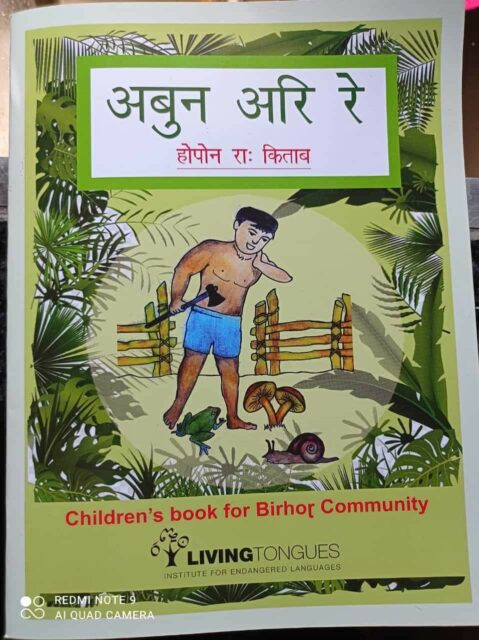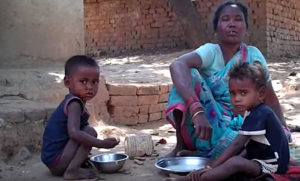Livemint.com, an Indian news website, published an article on March 19 about a new children’s dictionary of the Birhor language. The news story indicated that the dictionary is designed to increase the appeal of the language for their children so they will want to continue using it when they become adults.

Titled Abun Ari Re (Our Surroundings), the 40 pages of Birhor text by Bikram Jora is translated into both Hindi and English. The illustrated book includes words for folk tales, common objects, and activities that would appeal to kids so they will feel encouraged to use the Birhor language regularly. There are less than 10,000 speakers of Birhor today.
The book was compiled and published by the Living Tongues Institute for Endangered Languages, an organization that is based in the U.S. Jora, who is the project coordinator for South Asian projects for the institute, said that Birhor children are slowly abandoning their language in favor of spoken Hindi. “We have heard children now using batak, which is the Hindi word for duck, instead of the Birhor word gede,” Jora explained. The institute wants to counter the idea that the Birhor language will become irrelevant in time. Now is a good time to reverse that trend.

Last month the institute gave away 500 copies to school-age Birhor children in 10 villages located in five districts of Jharkhand state. It also gave free copies to local schools. With a literacy rate of around 20 percent among the Birhor, one of Jora’s goals in writing the book was to make Birhor words for common objects familiar to students—they frequently don’t appreciate the importance of their language when it doesn’t seem to relate to their daily lives. “With this book, the teachers will be able to communicate and understand the Birhor children better,” Jora said.
The author told the journalist that Birhor adults are beginning to take an interest in the program. One issue that has come up is that there are local variations of Birhor words for the same things. For instance, in one district the word for custard apple is “serfa” while in another it is “maadal.”
Gregory D. S. Anderson, the director and president of the institute, discussed the importance of preserving languages spoken by increasingly small numbers of people. He emphasized the need to reverse the trend of people abandoning their native languages in favor of the large, international ones.